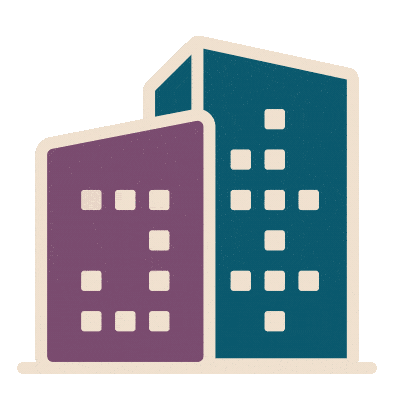Leading with Smarter Sensors: Ethos Engineering first to achieve the WELL Performance Rating
The WELL team spoke with Ethos Engineering’s Director of Sustainability, Müge Karasahin, about the strategies they pursued
Ethos, a leading mechanical and electrical design consultant for data centers and sustainable commercial buildings, made history when it became the first organization to achieve the WELL Performance Rating at its Dublin headquarters.
The team brought their wealth of experience to the process, working collaboratively to implement best practices for continuous monitoring and performance across key indoor environmental quality (IEQ) metrics. Pursuing the rating was important to a company eager to “practice what it preaches”, and provided the Ethos team with the opportunity to test some key assumptions about sensor data. The WELL team spoke with Ethos about the strategies they pursued, the technology they used and how visualizing performance data helped to shift the company’s business decisions and organizational culture.
How were you thinking about/evaluating building performance before you implemented the WELL Performance Rating?
The WELL Performance Rating launched at the perfect time for us, as we launched the Living Lab at our Dublin head office in November 2021. The Living Lab consists of an IoT platform, mobile tenant engagement application and an on-prem sensor layer consisting of 13 environmental quality sensors, 110 desk sensors, six people counting. and one noise and light sensor. This data is captured, stored, and transformed within our IoT platform.
As an engineering company, we recognize that building technology advancements are increasingly becoming a priority to building owners and managers and that they have a significant potential to support business growth, employee productivity and wellness, and tackle climate change. We believe smart technologies are one of the key answers for tackling today’s problems, and will prepare our buildings for the future.
We see it as our responsibility to define and deliver sustainable and healthy design solutions that exemplify the level of leadership expected from us. In order to stay ahead of the curve in this rapidly evolving market, we wanted to establish our Living Lab to try this IoT design, learn from it and advise our clients in a more experienced way. Also as a company that provides WELL Consultancy services, we wanted to practice what we preach - position the health and well-being of our employees at the center of our business and lead with transparency to drive employee confidence.
How did you unite your team around a shared vision for health? Who was involved? How did you collaborate?
Basically, we combined our advisory and engineering expertise in-house, including specialists in technology, WELL, sustainability and MEP engineering.
As we were setting up the Living Lab, we were already referring to the WELL Building Standard as a best practice for the location of air quality sensors and more. We contacted the International WELL Building Institute (IWBI) around that time asking if there was an opportunity to reduce the amount of on-site testing and capture more data via sensor. We learned that there was a new rating system being developed focusing on building performance via smart building technologies – so again, great timing!
In December 2021, I prepared a presentation for our group in the company, Ethos Digital. Then we went to the senior management with the idea of pursuing the WELL Performance Rating with the below benefits points:
- Practicing what we preach.
- Providing a healthy environment to our biggest asset – Ethos family!
- Getting a deeper understanding of and learning opportunities for the indoor environment.
- Leveraging an HR tool through internationally recognized, third-party reviewed verified data on our office conditions.
- Fitting within our overall ESG strategies.
- Providing marketing opportunities by being the first WELL Performance Rated office in the EU. (This was our initial target; it’s quite amazing that we are the first globally!)
Our CEO Greg Hayden said “This is no brainer; let’s go for it!”. After this, our HR, marketing team, management and engineers got involved with the project. We also reached out to a WELL Performance Testing Organization who came and tested our office for light levels, water quality and acoustic performance straight away to see the current performance of our office.
At the start of the rating process, what did you think your relative strengths were? What about your weaknesses?
First off, once the Performance Testing results came in, we found out that our light levels, water quality and acoustics (except two walls) already met the WELL criteria, so we had a good foundation to build up our scorecard. We already had most of the sensors in, gathering data.
However, I have to say that our real strength was our team! I have been a WELL AP since 2016, worked on and certified multiple projects as a WELL consultant. Brian Coogan, our Director of Smart Buildings, is the visionary behind the Living Lab and brought in so much smart building experience to the project. Conor Cleary, Intelligent Buildings Engineer, knows all things sensor, cabling, gateways, opening and closing holes on the walls! Alison Heffernan, our Head of People put the occupancy surveys together and administered it and advised the Ethos Wellness Committee. Supportive (and patient) senior management!
The IWBI team was very supportive as well, Mona Duff has always been great for all WELL things in Ireland. Clare Epke, who received so many questions from us, has provided amazing guidance and support.
The most challenging item for us was ‘time’ since we had a goal in mind. To achieve the minimum 21 features, we added additional sensors. At that time, the Ozone module of the sensors we have was just launched, so we had to wait for that to arrive and customize an IoT Carbon Monoxide (CO) and Nitrogen Dioxide (NO2 sensor. For documentation submission, at least one month of air quality data is required, which is a waiting period.
The documentation aspect of the sensor data was a bit challenging at the start, and I had a few calls with IWBI to sort it out.
Did you encounter any roadblocks along the way? How did you overcome them?
Our Living Lab is a testing environment. We want to try as many sensors as soon as possible to see the latest technologies, see how they work, and how accurate they are before we suggest anything to our clients. Therefore, we want to go the sensor way when it comes to the performance. In case of the measurement of Carbon Monoxide (CO) and Nitrogen Dioxide (NO2), after doing some research we found that there was no IoT device readily available that measured each of these gases.
We decided to utilise our team’s experience and build our own sensors that could push the data to the cloud. We purchased calibrated Modbus sensors that usually connect to a BMS system and built a panel that converted the Modbus data to MQTT. This enabled us to push continuous data to our cloud platform in the correct protocol resulting in the Ethos Living Lab being able to monitor CO and NO2 as per the WELL Performance requirements.
Which sensor/technology solutions did you use in your project?
We used these indoor air quality sensors:
- Kaiterra Sensedge Mini, which measures:
- PM2,5 (µg/m³)
- PM10 (µg/m³)
- TVOC (ppb)
- Ozone
- CO2
- Temperature
- Humidity
- Awair Omni, which measures:
- PM2,5
- TVOC
- CO2
- Temperature
- Humidity
- Light Levels
- Noise
- Dwyer Series GSTA High Accuracy
- Electrochemical Sensors
- NO2 – Nitrogen dioxide (ppb)
- CO – Carbon Monoxide (ppm)
- Ubiqisense – footfall sensors (people counting)
- Spaceti Platform for data visualization and displaying
How have you leveraged the learnings from the rating to visualize performance onsite and educate your team?
Gathering the data is one thing and understanding it is another. Again, this was a great learning opportunity for all of us at Ethos considering our diverse team, from engineers to consultants.
At Ethos, it’s our responsibility to deliver sustainable design solutions that exemplify leadership in the community. The Ethos Digital Team sees first-hand that the building industry is rapidly evolving, with a shift in focus to building performance and reporting. We are increasingly relying on data to navigate the built environment, measure building performance and utilize our spaces efficiently.
We know that research is crucial in identifying market trends and problems companies face. These include concerns on returning to the office safely, meeting sustainability ESG goals, workplace management, hybrid working, post-COVID safety and more.
We considered these and established key targets for our Living Lab, including accuracy of environmental performance, space utilization information and the WELL Performance Rating.
Through intensive testing, we identified the following issues (but not limited to) that required additional development from our partners to ensure data quality:
- Location-based sensor data inaccuracy
- Carpark sensors – gateway line-of-sight connectivity problem
- People counting – field of view and marketing images counting
- Network connectivity – cyber security
- Mobile App – beta testing with colleagues
- Sensor configuration with platform and signal conversion to MQTT
Our findings led us to make some pivotal changes to improve the performance of our office space, including:
- Cleaning materials – changed to reduce TVOCs
- Air flow increase – removed high levels of TVOCs
- Activity-based working – incorporated space bookings
- Platform development – data visualisations and module expansion for - ESG reporting
- Additional sensor types – defined performance differences
- Device Qualification – mitigated network cyber security issues
- Manufacture collaboration - refined functionality/firmware accuracy
- API development - increased data input/extraction from IoT platforms
What are two strategies that you implemented that you are particularly proud of?
One of the most interesting and educational things we did was to place the exact same two sensors on top of each other – one in the breathing zone (between 1.1 – 1.7 meter) and one at the ceiling level to compare the air quality data. We compared this data based on air quality contaminants and thermal conditions, both during all hours and regularly occupied hours.
Even though these two sensors are only around 1.5 meters apart from each other, there is quite a difference between the thermal conditions. On average the ceiling level would be 2-3 C degrees warmer, and humidity would be 5% higher on the ceiling level. If we are designing for human experience the data should reflect the actual conditions of where the people are. If a building is arranging its thermal conditions based on the ceiling level, it may not provide the best experience for people. Of course, there are more things to consider here, as this data is only based on our office and we cannot generalize it. It depends on the ventilation design or direct sunlight exposure of the space.
The second is probably our occupancy survey and the Ethos Wellness Group. We may measure everything in an office, but what really matters is the employee’s opinion and how comfortable they are within the space.
How are you using performance outputs to make smarter decisions about the way you run your business? How do you anticipate insights from the rating will impact your 2023 strategic planning?
Our WELL Performance Rating achievement enabled us to make smarter and insightful decisions on how we run our offices. Very early on we noticed that our cleaning products are causing significant TVOC spikes, so we changed the cleaning products and procedures and managed this increase in chemicals. We definitely had lessons on natural ventilation and air quality, and how the outdoor conditions (wind and wind direction) affect the air quality. As an engineering company this insight has been very significant, and we make sure to communicate these with our clients and apply them in our designs.
From a reporting point of view, Ethos Engineering has already started the journey on net zero carbon and ESG reporting. We are also working to align with the European Union’s upcoming Corporate Sustainability Reporting Directive which is going to be the EU law for large companies to disclose information on the way they operate and manage social and environmental challenges.
Our WELL Performance Rating achievement enables us to create accountability and transparency around employee well-being. We are working to report well-being data related to the physical workplace. It also helped us structure occupancy surveys and foster a strong company culture, from our Wellness Group to events and trainings.






